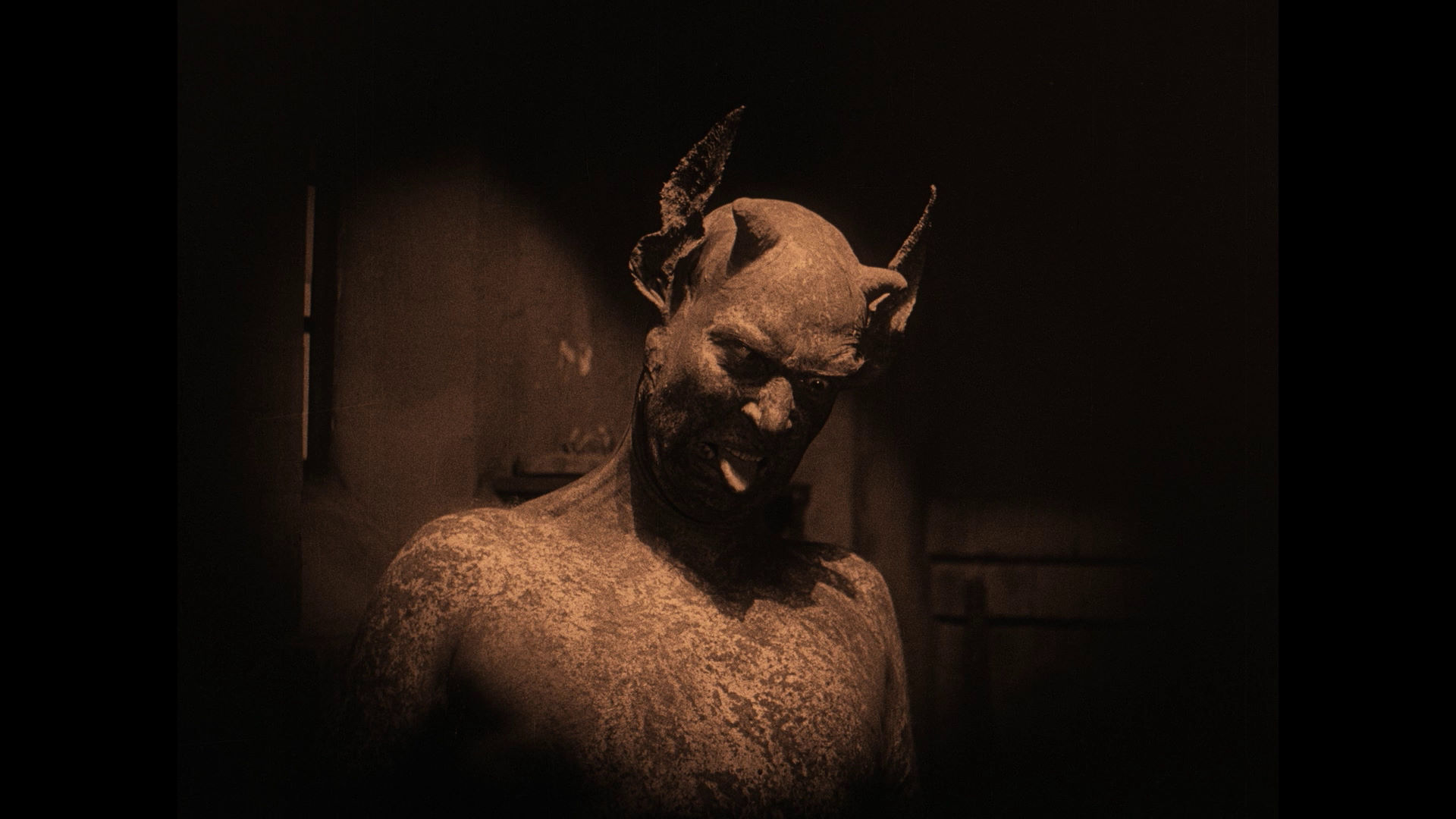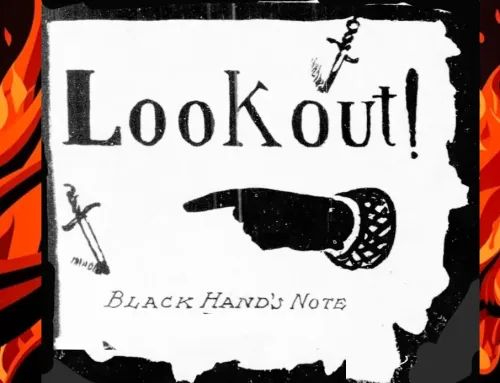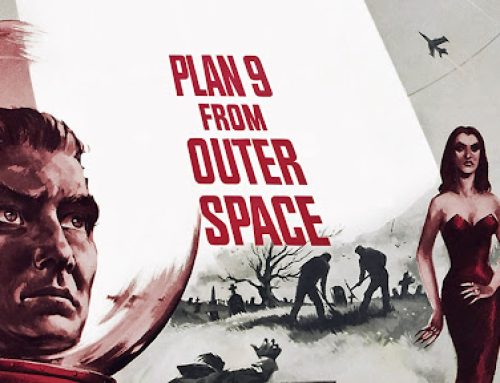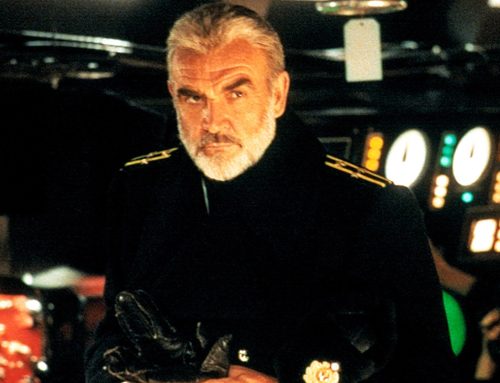41. This Night I Will Possess Your Corpse (1967) The second offering by Brazilian horror director Jose Mojica Marins, better known as Coffin Joe, features the villainous Zi do Caixco and is far better than the first film, At Midnight I’ll Take Your Soul. Zi do Caixco is an evil and powerful undertaker that rules a small Brazilian community through fear. However, there is only one thing he wants – a son. Kidnapping five women from the village, Zi do Caixco puts them through malicious and murderous trials to pick the one mate that will be a suitable concubine for his evil spawn. Often disturbing and misogynistic, this film is also strangely erotic and appeals on a fetish like level; especially to the lovers of the strange and deviant. Scenes involving tarantulas crawling over sleeping women, a torturous journey through a cotton candy colored version of hell and a haunting and memorable snake pit scene will chill your blood. Tonight I Will Possess Your Corpse isn’t probably for everyone but lovers of Eric Stanton or the Marquis de Sade might truly appreciate this strange and eerie film.
42. Night of the Living Dead (1968) Classic zombie film director George A. Romero’s original Night of the Living Dead is still the best zombie movie ever made. What seems to be a simple plot about seven people trapped in a farmhouse surrounded by flesh eating zombies with a hunger for brains becomes a chilling psychological study. By throwing together a diverse cast of characters from different races, ages and economical backgrounds, Night of the Living Dead becomes an interesting look at how different people deal with mind numbing horrific life or death pressure, which in this case is a zombie attack. Great performances by Duane Jones as the heroic Ben, who takes charge of the situation, although his first concern is his own survival; Judith O’Dea as Barbara, the middle class girl who has a total mental breakdown; Karl Harman as Mr. Cooper, an unreasonable blue collar ass who is Ben’s protagonist; and Russell Streiner as Barbara’s brother Johnny whose line “Their coming to get you Barbara” gave the film it’s most famous catchphrase. Although deemed gory at the time of its release it is fairly tame by today’s standards. Despite this though, it still proves to be a tense and suspenseful film today. Night of the Living Dead would go on to be remade, spun off and victim of hundreds of imitations, but the original is still the smartest and the best.
43. Rosemary’s Baby (1968) Roman Polanski spins a tense and claustrophobic yarn in his first American film. When newlyweds Rosemary and Guy Woodhouse, played by Mia Farrow and John Cassevettes, move into a strange building, Rosemary begins to have terrible nightmares, leading her to believe that she is being used by a satanic cult to give birth to the spawn of Satan. Mia Farrow is excellent as a paranoid woman who must question even the simplest and most mundane things in her life, and who is unable to trust anybody This film has more twists and turns than even the best thrillers and nothing is ever what it seems as it keeps you guessing up to the shocking final scene. Followed by a dreadful made for TV movie sequel, but is a great back to back feature with The Omen which acts as a sequel of sorts itself.
44. The Witchfinder General (1968) Despite being titled The Conquer Worm for American release in an attempt to try to cash in on Roger Corman’s popular Edgar Allen Poe films staring Vincent Price, The Witchfinder General was not a Corman film nor was it based on an Edgar Allen Poe story or poem. In actuality, The Witchfinder General was based on a novel by Ronald Bassett and was the final film of young filmmaker Michael Reeves, who would die of a drug overdose shortly after the films release. Taking place during England’s civil war, The Witchfinder General tells a fictional account of the real life 17th Century witch hunter Matthew Hopkins, played by Vincent Price, who, with the aid of his trusty companion John Stearne, used England’s social and political unrest for his own financial and sexual gains by torturing and executing accused witches, who were more often then not innocent, and then charging town officials for his services. When Hopkins comes to the town of Brandeston he tortures and executes the local priest and sexually exploits his niece Sara. However, when Sara’s fiancé Richard Marshall, a general in Oliver Cromwell’s army, returns to find out what happened, he vows to seek revenge on Hopkins and to end his reign of terror. Deemed shocking for it’s violent content when it was released, and heavily edited in it’s native country of England, The Witch Finder General seems mild by today’s standards. However, the witch burning near the ending of the film still remains to be a powerful by staging it in a way never seen on film before, and by featuring close ups of the blank faces of the crowd that are have come to partake the morbid proceedings throughout the scene. Furthermore, Vincent Price gives the greatest performance of his career as Matthew Hopkins, despite a nasty ongoing feud between himself and director Reeves. While we love Vincent Price for his over the top characters and larger then life acting, Reeves wanted Price to give a subtle and evil performance. Yet, despite fighting Reeves every step of the way, after the completion of the film Price stated that while The Witch Finder General was the film he hated working on the most, he believed it was the best film that he ever made, and the best performance he ever gave thanks to Reeves vision. The Witch Finder General remains to be a powerful watch, and reminds us that not all the monsters on the screen are vampires or werewolves, but stem from the greed and ignorance in the hearts and minds of man, and shows that superstition and fanaticism can be as evil and destructive as the most wicked beast.
45. Count Dracula (1970) I know…I know. This is the third version of Dracula that you’ve seen on this list, and it isn’t probably going to be the last. How many versions of Dracula do we need to see on the silver screen? Well this one is different. Very different. First, it stars Christopher Lee in his most famous role…but for the first and only time not playing Dracula for the Hammer studios. No. This time Lee is playing Dracula for cult movie director Jess Franco and, for the only time in his career, actually comes close to playing the role as Bram Stoker had actually wrote it! However Lee is only the tip of the ice burg when it came to the cast that Franco pulled together for possibly one of his best films. How about adding Herbert Lom as Dr. Van Helsing and the incredible and strange European horror legend Klaus Kinski as the quietest, and possibly eeriest, Reinfield ever? Count Dracula is also notable for being the first time Franco worked with tragic and beautiful Soledad Miranda who plays Dracula’s most famous victim, Lucy. All the other usual Franco players are here as well – Fred Williams, in possibly the best acting job of his career, plays Jonathan Harker; Paul Muller is Dr. Seward; Maria Rohm is Mina and Franco himself appears as Van Helsing’s man servant. Sure, you’ve seen Dracula before and this version doesn’t really offer you anything new, but this outstanding cast, plus incredible on-location filming makes Jess Franco’s Count Dracula one of my all time favorite versions of this classic tale.
46. House of Dark Shadows (1970) Already a cult favorite when it appeared on the big screen, House of Dark Shadows brought the cast and characters of the gothic daytime soap opera to a wider audience, and sealed the show’s most popular character, Barnabus Collins played by thespian Jonathan Frid, into the vampire hall of fame. When Barnabus Collins is awoken from his slumber by the drunken caretaker Willie Loomis, he introduces himself to the Collins family as a long lost cousin from England. Well, long lost perhaps, but little do they know that he’s been long dead too. However, when Dr. Julia Hoffman falls in love with Barnabus, and then finds out his secret, she devises a popular cure for vampirism. But, when she is scorned by Barbabus when he falls in love with the Collins nanny Maggie Evans, she betrays him and unleashes a fury that threatens to doom the entire Collins family. As a result of a larger budget and location shooting the producers of House of Dark Shadows were able to create a larger and lusher world for the Dark Shadows cast to work with. Also, because of lack of censor interference, the film is bloodier and more violent then the television show, making it a true horror experience. However, as a result of attempting squeeze nearly three years worth of story into a 97 minute film some interesting plot developments which would have lasted months on the daily drama, such as the vampirism of Carolyn Stoddard, are played out to fast leaving viewers unsatisfied. Also, in an attempt to squeeze appearances in for the entire cast, you don’t get to really know many of the characters unless you watch the TV show. Regardless, if you have never seen Dark Shadows this film will turn you into a fan of the series. You really need no fundamental knowledge of the show, and you are left wanting more by the end. Although they set Barnabus up for a sequel (make sure to watch the credits until the very end), becoming bored with his vampire character, Jonathan Frid refused to appear in the 1971 sequel Night of Dark Shadows, which would substitute later stars David Selby as werewolf Quinton Collins and Laura Parker as sorceress Angelique as the focus. Although it to is an enjoyable film, it suffers from not having Jonathan Frid in it. House of Dark Shadows is probably still the best film based on a television series that has been made.
47. The House That Dripped Blood (1970) Despite being a mainstay in the horror genre, the horror anthology film has never thrilled me. I have always found the stories to fall short due to the little amount of time given to build a tale. However, there is an exception to everything, and when it comes to the horror anthology The House That Dripped Blood is an exceptionally good film. Director Peter Duffel brings together a who’s who of British horror, sci-fi and fantasy greats to tell a quartet of tales guaranteed to chill the viewer to the bone. “Vampires! Voodoo! Vixens! Victims! Terror Awaits You In Every Room” boasts the poster, and this film succeeds in delivering all that it promises. A weak wraparound story involves a detective, played by British character actor John Bennett, searching for a missing horror actor who, through his investigation, is told the garish fates of the actor, as well as the three previous owners, via stories by a local police sergeant and a real estate agent. The first story, Method for Murder, features Denholm Elliot as a horror novelist who is haunted by visions of his own creation, a strangler named Dominic. Is it all in his mind, or is Dominic more real then Elliot thinks? The second story, Waxworks, features horror mainstay Peter Cushing, who plays a mysterious loner who enters a wax house and comes face to face with a wax figure that reminds him of a woman who he was in love with. When he is visited by his good friend and previous romantic rival, played by noteable British actor Joss Ackland, Ackland also visits the wax house, and is too drawn to the mysterious wax figure. However, as Ackland’s obsession with the figure grows, the murderous secret behind the figure is revealed, and it is up to Peter Cushing to save Ackland before the pair of them lose their heads. The third, and most compelling of the stories, titled Sweets to the Sweet, tells of a strange widower, perfectly played by Christopher Lee,, who hires a beautiful school mistress, played by alluring Nyree Dawn Porter, to home school his little girl Jane. However, as the weeks go by, Porter becomes disturbed by the emotional abuse and cruelty that Lee dishes out on his daughter. Yet, is there more to Jane then her teacher realizes, and who is really the more eviler of the two – father or daughter? Finally, the fourth story, The Cloak, features the tale of the missing actor. 70′s Doctor Who star John Pertwee plays a temperamental horror actor who is disgusted by the cheap quality of his latest film. Instead of wearing the costume given to him, Pertwee goes out to find his own vampire cloak, but to his horror finds that the cloak has the ability to make his films come true. The Cloak also features Ingrid Pitt as Pertwee’s co-star who has her own devious interest in the actor. The House That Drips Blood is successful due to it’s array of excellent actors, as well as it allows each story about a half an hour, which makes each story feel fleshed out enough to satisfy the viewer. Each story is also well written and well paced, making The House That Dripped Blood one of the best crafted horror films of the 1970s. You really do get four stories for the price of one with this excellent film.
48. Satanis (1970) Anton LaVey, the founder of the Church of Satan and the author of the Satanic Bible, welcomes you into his black house to partake in Satanic rituals, orgies and other perversions in this well made and informative documentary by Ray Laurent. Satanis is entirely compiled from interviews with the entire LaVey family, including patriarch Anton, wife Diane Haggarty and teenage daughter Karla (the current high priestess of the Church of Satan today) as well as a wide range of insights by Anton’s followers, friends, neighbors and foes explaining their personal points of views about Anton and his cult. Anton LaVey comes off as being a charming, witty and charismatic individual who in the simplest and broadest terms possible explains his theology and why he has chosen to dedicate his life to worshiping dark forces. However, although diabolical, Anton LaVey does not come off as being heartless or evil. In fact, he almost comes off as being sort of friendly as he debunks many of the myths surrounding Satanism, such as human and animal sacrifice. Oddly enough, many times Anton LaVey’s ideas make a lot of sense, and his sincerity makes Satanism seem very attractive and appealing. But Satanis is not a tool used to promote Satanism or make the viewer fear it. Laurent gives all sides of the theology debate to speak, including local catholic priests and Mormon missionaries, who, despite coming off as being bland, are taken seriously. It is the views expressed by LaVey’s neighbors which are the real treat, which range from fascination to disgust. My personal favorite is LaVey’s next door neighbor whose biggest concern seems to be that Anton LaVey doesn’t keep up his yard. Yeah. Right. I can just imagine Anton now on a hot summer day cutting the lawn and sipping on lemonade brought to him by little Zeena. Another highlight includes a grouping of LaVey’s church members sitting around having a group discussion about their beliefs and rituals, full of inside jokes and laughter. This is not the grim group of people that you’d expect in a Satanic cult, or the typical goth kids that would partake in such rituals today. These people aren’t scary, for perhaps the exception of the ugly hillbilly woman who does her interview naked. She’s a bit scary. However, for the exception of maybe her the Satanists interviewed are, for the most part, middle class thrill seekers and weirdos, but look to be as normal as any of your typical white bread Americans. They are intelligent, well spoken and could be your average postal worker, police officer or pharmacist. Sure, the rituals seem a bit cartoony and put on, full of nudity and perhaps a bit of laid on shock value, which leads me to believe that LaVey and his followers were holding back for the sake of the cameras, but what Satanis provides you with is the real deal. These are real Satanists explaining Satanism in the clearest way possible.
49. Brotherhood of Satan (1971) Brotherhood of Satan is one of the great overlooked horror films of the 1970′s. When a widowed father, his adorable little daughter and sexy bombshell girlfriend with false eyelashes as big as her chest, stumble upon a small desert town to report a car crash, they find the town is gripped in hysteria as the children of the town have been disappearing and their parent’s have been murdered. When little KT (played by Geri “Fake Jan” Reischl) goes missing, the search leads to a cult of elderly Satanists who are using the children to ensure their own immortality. While it’s easy to pass this film off in the junk pile of bad films, Brotherhood of Satan has some truly scary moments. More importantly though, “Brotherhood of Satan” offers an almost desperate and claustrophobic ending to this overlooked thriller.
50. Duel (1971) The ultimate tale of road rage! Dennis Weaver plays a jerky little traveling sales man in a Chevette who passes a giant black oil rig of death on a long stretch of highway and finds himself the target of terror as the unseen driver spend the entire day chasing Weaver through the California desert trying to crush him under his mighty wheels. What seems like a slim plot for a film becomes a masterpiece in horror under the creative force of two of legendary names of modern pop culture – writer Richard Matheson, who wrote the script based on what would be his last short story, and director Steven Spielberg in his debut as a feature film director! In order for the film not to become dull or redundant, Matheson and Spielberg put Weaver in a series of imaginative sceneries framed by inspired camerawork, creating a rollercoaster ride of suspense and terror as the viewer wonders how the cat and mouse chase will end. Originally shot as a TV movie in 1971 Duel was so popular with audiences that it was re-released theatrically later the same year. Weaver gives the performance of his career by holding the majority of the film on his shoulders as he goes from being annoyed, to frightened, to paranoid and finally manic while trying to escape the mysterious oil rig. Creating an even more eerie element to the film is that you never see the face of the driver of the rig. You see a boot or a hand, but never a face, making the oil rig into a villain all its own. Duel remains to be one of Steven Spielberg’s most inspired and interesting films, and was the promise of more brilliant things to come.





Leave A Comment